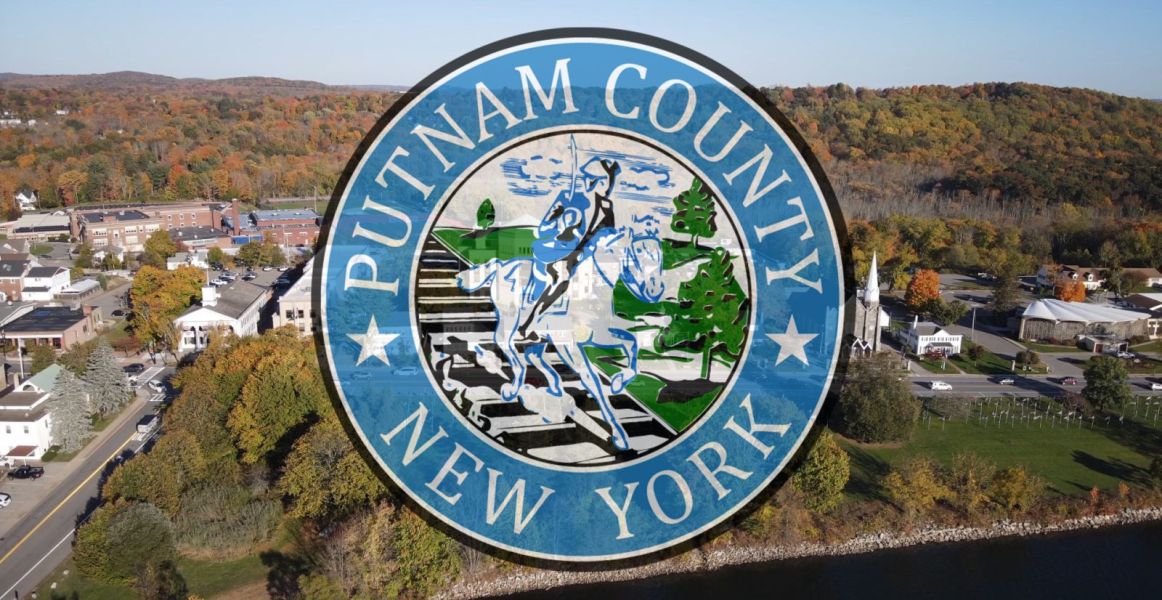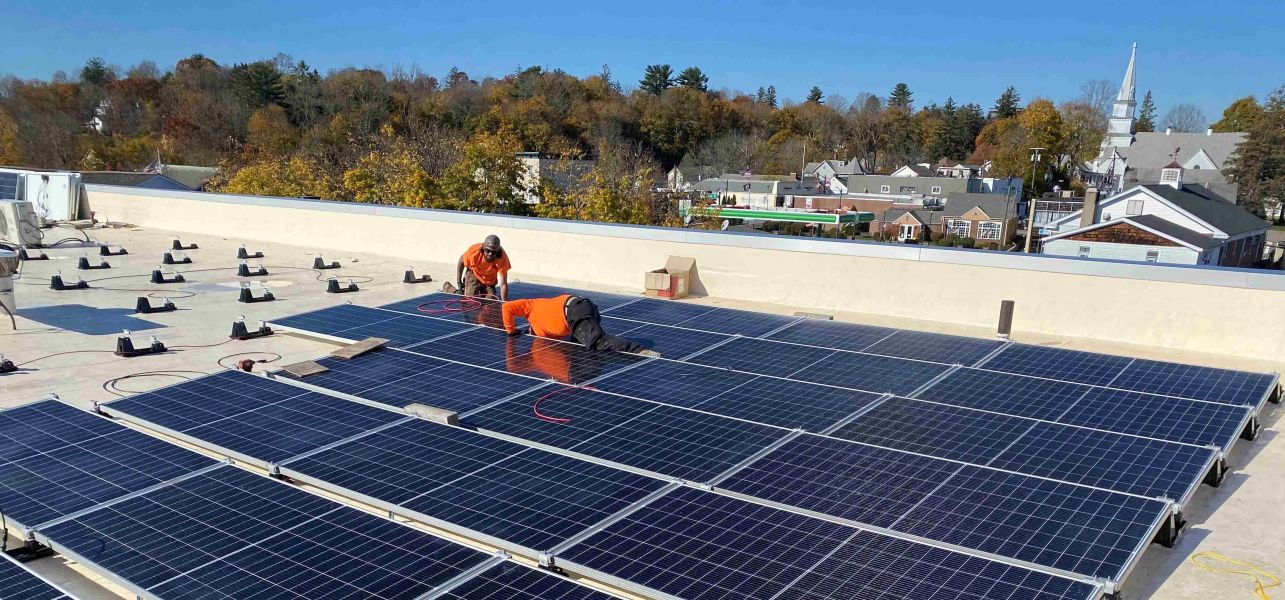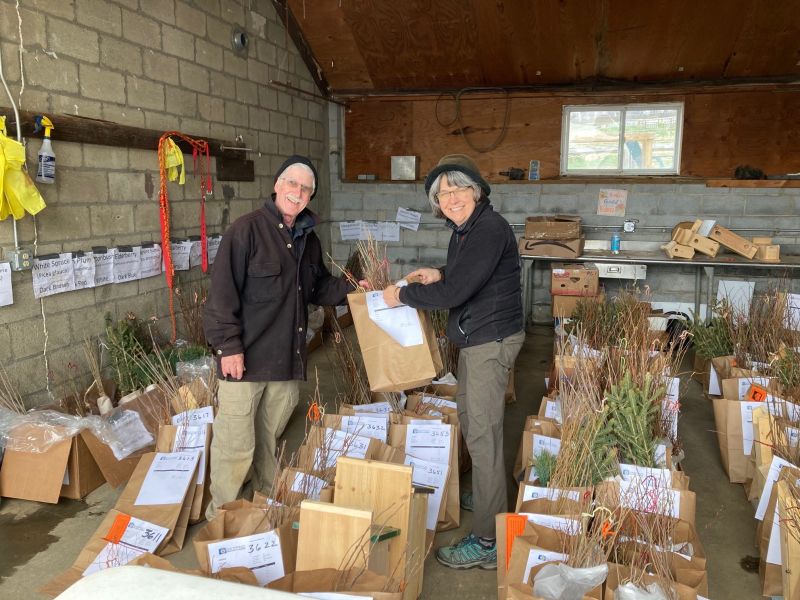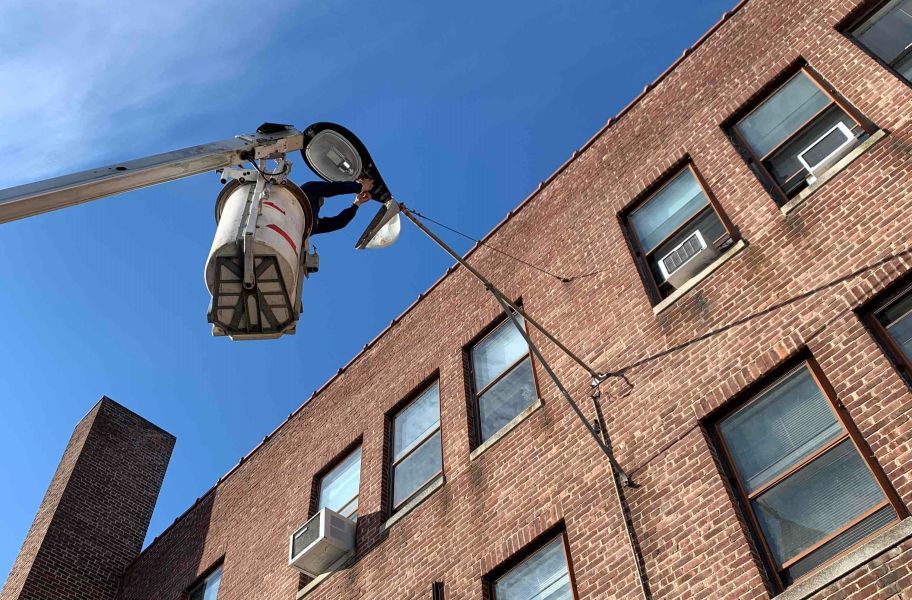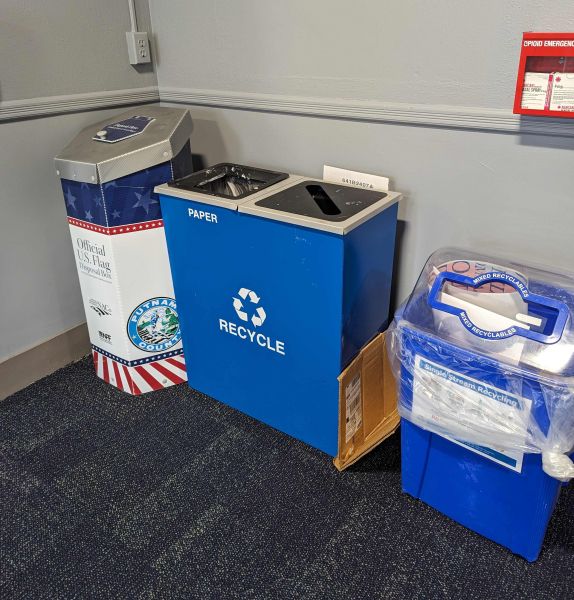- County Executive
- Elected Officials
- Legislature
- Departments
-
Welcome to the Putnam County Government Department Directory
Visit The Department Pages for Contact Information.
Note: The PUTNAM COUNTY COURTS are not affiliated with Putnam County Government. You can call the Putnam County Court’s phone system at 845.208.7800.
Hours of Operation
-
Regular Hours9:00am - 5:00pm
-
Summer Hours8:00am - 4:00pm
-
Our Partners
-
-
- Notices & Laws
- Tourism
- Careers
See Something? Say Something! Report Suspicious Activities Here! - PCTAM.NET
Quick Translate
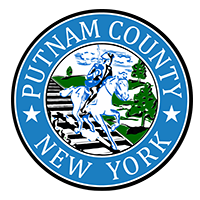
Climate Smart
About
The Climate Smart Communities (CSC) Program began in 2009 as an interagency initiative of New York State. The CSC program is jointly sponsored by the following six NYS agencies: Department of Environmental Conservation (DEC); Energy Research and Development Authority (NYSERDA); Department of Public Service; Department of Transportation (DOT); Department of Health (DOH); and the Power Authority (NYPA). DEC acts as the main administrator of the program. The program helps local governments take action to reduce greenhouse gas emissions and adapt to a changing climate. To learn more visit https://climatesmart.ny.gov/about/
The Putnam County Climate Smart website is featured as an affiliate webpage under the Department of Planning, Development, and Public Transportation, the department leading the County's Climate Smart efforts. This site is intended to only reflect the efforts/initiatives that Putnam County as its own municipality has taken to mitigate and adapt to the climate crisis. Additionally, this site will act as an educational resource to residents and other municipalities interested in achieving a lower carbon footprint. Other municipalities have the opportunity to register and/or certify as a CSC and create their own programs.
The list of registered/certified communities within Putnam and their websites are as follows:
- Kent (registered): https://www.kentclimatesmart.org/
- Philipstown (bronze certified): https://www.climatesmartphilipstown.org/
- Putnam Valley (registered): https://www.putnamvalley.gov/climate-smart-task-force/
- The Village of Cold Spring (registered): https://www.coldspringny.gov/advanced-search?keywords=climate
- The Village of Nelsonville (registered): https://www.nelsonvilleny.gov/
Climate Change
What is Climate Change?
Climate change refers to long-term shifts in temperatures and weather patterns. Such shifts can be natural, due to changes in the sun’s activity or large volcanic eruptions. But since the 1800s, human activities have been the main driver of climate change (aka anthropogenic climate change) primarily due to the burning of fossil fuels like coal, oil and gas. Burning fossil fuels generates greenhouse gas emissions that act like a blanket wrapped around the Earth, trapping the sun’s heat and raising temperatures. The main greenhouse gases that are causing climate change include carbon dioxide (CO2) and methane (CH4). Popular sources of CO2 emmissions include combustion engines (gasoline and diesel), coal and natural gas burning for heat and energy, and deforestation (removing carbon sinks). 87 percent of all human-produced carbon dioxide emissions come from the burning of fossil fuels like coal, natural gas and oil. Major sources of CH4 emmissions include agriculture, oil and gas operations, wastewater treatment, and landfills. Energy, industry, transport, buildings, agriculture and land use are among the main sectors causing greenhouse gases. (Source: United Nations)
“Climate change” and “global warming” are often used interchangeably but have distinct meanings. Similarly, the terms "weather" and "climate" are sometimes confused, though they refer to events with broadly different spatial and time scales. Climate change refers to changes in weather patterns and growing seasons around the world. It also refers to sea level rise caused by the expansion of warmer seas and melting ice sheets and glaciers. Global warming causes climate change, which poses a serious threat to life on Earth in the forms of widespread flooding and extreme weather. (Source: NASA)
Climate change effects can be seen and felt accross the entire United States. To learn more about regional impacts of climate change, visit https://climatechange.chicago.gov/climate-impacts/climate-change-impacts-region.
- In the Northeast, heat waves, heavy downpours, and sea level rise continue to compromise infrastructure, agriculture, fisheries, and ecosystems. As such, many states and cities are beginning to incorporate climate change into their planning activities.
- In the Northwest, changes in the timing of peak flows in rivers and streams are reducing water supplies and worsening competing demands for water. Sea level rise, erosion, flooding, risks to infrastructure, and increasing ocean acidity pose major threats. Increasing wildfire incidence and severity, heat waves, insect outbreaks, and tree diseases are causing widespread forest die-off.
- In the Southeast, sea level rise poses the greatest threat to the region's economy and environment leading to decreased freshwater availability. Extreme heat waves will continue to effect public/environmental health, energy, agriculture, and more.
- In the Midwest, extreme heat, heavy downpours, and flooding continue to effect infrastructure, public health, agriculture, forestry, air and water quality, and more.
- In the Southwest, climate change has brought about increased heat, drought, and insect outbreaks making wildfires and vector transmitted diseases more severe. In coastal areas, flooding and erosion are additional concerns. (Source: NASA)
According to the NYSDEC "the annual statewide average temperature in New York has warmed 3°F (0.6°F per decade) since 1970. The state's average temperatures are projected to rise by as much as another 3°F by 2080 with the greatest warming occurring in the northern parts of the state. Rising annual temperatures are already having widespread impacts on New York's communities and ecosystems and impacts are expected to increase. New York State's changing climate may no longer be able to support the types of plants, insects, and wildlife living in New York, particularly those in high-elevation regions like the Catskills and Adirondacks. As New York's temperatures increase, these species will extend their range north, impacting the industries and economies that depend on them such as fishing, hunting, and tourism."
Across the northeastern U.S., winters are warming faster than any other season. Over the last century, average winter temperatures have increased by approximately 3°F, spring temperatures by 2°F, and summer and fall temperatures by 1.4°F. Warmer winter temperatures and fewer days below freezing bring winter precipitation in the form of rain casuing reduced snow cover and earlier spring snow melt. Reduced snow cover not only effects winter tourism in the State but also increases the vulnerability of certain plants that depend on snow for insulation, and wildlife that depend on snow for protection from predators during the winter.
Warmer winters in New York are also affecting the winter-spring season transition, impacting the timing of blooming for trees and flowers which migrating and hibernating wildlife depend on for food. Changes to the timing of the winter-spring transition can also impact agriculture by extending the length of the growing season, with the last frost of winter occurring earlier in the year. Although increasing the length of the growing season can have advantages, it can also impact the types of crops that can be grown, encourage invasive species, weed growth, and crop diseases, and increase demand for irrigation. (Source: NYSDEC)
Many states have taken action against climate change and its effects by incorporating mitigation and adaptaion planning strategies for example. Specifically, New York State created the Climate Smart Communities (CSC) program in 2009 to ensure that statewide municipalities would act on climate change and its impacts. NYSERDA's Clean Energy Communities (CEC) program began in 2016 to encourage local governments in New York State to implement clean energy actions, save energy costs, create jobs, and improve the state of our environment.
To learn more about the impact of climate change in New York, visit https://dec.ny.gov/environmental-protection/climate-change/new-york-response
As is the case with most of the United States, Putnam County and the Hudson Valley area are no strangers to the impacts of climate change. In short, below is an outline of the challenges that lie ahead for our region.
Rising Temperatures:
- Heat waves affecting disabled, elderly, children and other vulnerable individuals.
- Increase in vector born (ticks, mosquitos, fleas, etc.) infectious disease rates such as Lyme Disease, Zika Virus, West Nile Virus, etc.
- Increase in insect reproduction rates
- Increase in invasive species: Emerald Ash Borer, Giant Hogweed, Japanese Stiltgrass, Jumping Worm, Spotted Lanternfly, Swallow Worts, etc.
- Rising sea levels: Atlantic Ocean expected to rise 2ft - 4.5ft by the year 2100. Since the Hudson River eventually reaches the Atlantic Ocean, it is expected to rise at the same rate.
- Longer pollen seasons
- Shorter winter recreational seasons (skiing, snowboarding, tubing).
Heavier/Frequent Rainfall:
- Flooding and erosion (possible infrastructure failure)
- Difficulty farming
- Climate refugees from NYC/LI/NJ due to rising sea levels and tropical storms/hurricanes causing development pressure on open space.
- Damaged crops (apples, peaches, pears, blueberries, etc.)
- Delayed harvest dates and reduced crop yields.
- Increase in waterborne diseases via overwhelmed wastewater and stormwater systems (untreated water may be released into local water bodies).
To learn more about how climate change is impacting the Hudson valley region, visit https://theotherhudsonvalley.com/2018/11/29/climate-change-hudson-valley/ and https://cceputnamcounty.org/natural-resources/invasive-species.
Information
-
Putnam County's Climate Smart Community Pledge
By Resolution 114 of 2019, Putnam County became a registered community by taking the 10-element pledge to reduce greenhouse gas emissions and adapt to a changing climate. The focus of the CSC program is to encourage local governments to commit to climate action by passing a resolution containing the ten point CSC Pledge. Putnam County has taken the pledge and the elements of which follow:
- Build a climate-smart community
- Inventory emissions, set goals, and plan for climate action
- Decrease energy use
- Shift to clean, renewable energy
- Use climate-smart materials management
- Implement climate-smart land use
- Enhance community resilience to climate change
- Support a green innovation economy
- Inform and inspire the public
- Engage in an evolving process of climate action
Fore more information about the Climate Smart Communities Pledge, click the following link to view the pledge elements: https://climatesmart.ny.gov/actions-certification/certification-overview/certification-framework/
To view Putnam County’s Climate Smart Community Pledge Resolution, click here.
The Town of Kent, Village of Nelsonville, Town of Putnam Valley, and Putnam County are all individually registered communities apart from the Town of Philipstown being a Bronze certified community.
-
Putnam County's Climate Smart Task Force
Following our registration as a participating community, the former County Executive, MaryEllen Odell, selected the Executive Capital Projects Committee to serve as the CSC Task Force. In 2023 we revitalized the Task Force to include more members of the community as well as personnel from multiple county departments and to build upon the previous efforts that primarily took place in 2019. The Department of Planning, Development, and Public Transportation is responsible for leading and maintaining climate smart initiatives.
The Task Force membership is as follows:
- Ilona Campo, Putnam County Climate Smart Coordinator / Planning Assistant, Department of Planning, Development, and Public Transportation
- Barbara Barosa, Commissioner of Planning
- Amy Sayegh, Legislative Representative (District #8)
- Jennifer Caruso, County Executive Representative / Director of Compliance and Intergovernmental Relations
- Joseph Bellucci, Deputy Commissioner of the Department of Public Works (DPW)
- Neal Tomann, Acting Soil & Water District Director / Philipstown Resident
- Shawn Rogan, Director of Environmental Health Services / Town of Patterson Councilman
- Vincent Tamagna, Director of Transportation
- Joseph Montuori, Executive Director of Sustainable Putnam
- Anne Campbell, Kent Town Council Member
- Max Garfinkle, Natural Resources Officer / Wetlands Inspector, Town of Philipstown & Biologist with NYS Parks
- Amanda Catale, Community Energy Advisor, Putnam County Cornell Cooperative Extension
Meeting Minutes
-
Climate Smart Actions
Article 9 Government Building Energy Audits
In 2019 Ameresco, a renewable energy/energy efficiency engineering company, completed an Investment Grade Audit (IGA) for Putnam County, New York. In the IGA Ameresco, together with Putnam County, set forth a plan to identify, manage and conserve energy through a variety of Energy Conservation Measures (ECM). By implementing these ECMs with Ameresco, each facility owned and operated by the County will become a more safe, productive, and cost-effective environment for taxpayers and employees alike. To view the final report see below.
Community Greenhouse Gas (GHG) Inventory
As part of the CSC program, Putnam County created a Community GHG Inventory utilizing 2020-2022 data which identifies and quantifies the sources of GHG emissions from community activities and establishes a baseline from which future emissions reductions and progress can be measured. The Community GHG Report below was developed using a template provided by the Hudson Valley Regional Council (HVRC).
Solar Energy Installations
With capital projects funding, the County installed rooftop solar arrays on the Kern Building in 2021, on the County Office Building (COB) in 2022, and on buildings 1, 2, and 3 of the Donald B. Smith (DBS) Government Campus in 2023. The peak capacity for all five buildings is roughly 371 kW. All building solar arrays are currently active, however, only the Kern Building and DBS Government campus buildings are fully integrated into the SolarEdge monitoring system. The COB will be fully uploaded to the system later in 2024/early 2025. The Kern Building's solar panel installation was advertised via The Examiner News in 2021, the link to the press release is as follows: https://www.theexaminernews.com/putnam-county-goes-solar-with-panels-on-kern-building/. All energy generated from the arrays goes back into the building to reduce the charge from the utility provider (NYSEG). In instances when the building is drawing less power than currently being generated (i.e. weekends and holidays) the extra power is exported back to the utility grid (NYSEG) and the County receives a credit on their utility bill. The following documentation gives an overview of the installations:
Complete Streets Policy
The Putnam County Legislature adopted a Complete Streets Policy (below) in December 2023. The Policy was developed by the Department of Planning, Development, and Public Transportation as well as the Department of Public Works in accordance with NYSDOT standards and CSC Program requirements in order to evaluate existing projects and implement new projects that adhere to Complete Street's objectives. For more information about Complete Streets study locations visit: https://putnamcountyny.com/planning-department
Hazard Mitigation Plan
The 2021 Putnam County Hazard Mitigation Plan identifies hazards of concern including harmful algal blooms, drought, disease outbreak, extreme temperatures, floods, wildfires, severe storms, and more which have the potential to be exacerbated by climate change. With participation from each community within the County, mitigation and adaptation is possible with the pooling of resources and the creation of partnerships that ultimately foster more resilient communities. Putnam County completed its HMP in collaboration with Tetra Tech; the Plan has since been submitted to and approved by NYSDHSES and FEMA. To view the approved plan, visit https://putnamcountynyhmp.com/draft-plans/.
Cooling Centers
Putnam County has promoted awareness and outreach to residents about available cooling centers during the summer months via the County's Bureau of Emergency Services website, Facebook, Instagram, and Twitter. Eight local libraries and six town halls are available as a cooling centers (residents are encouraged to call ahead). All PART routes (1, 2, 3, & 5) as well as the seasonal Cold Spring trolley (operating Saturdays and Sundays, Memorial Day to Labor Day weekend) have designated stops at or near the libraries and town halls. Below is an outline of the cooling centers available during the summer months.
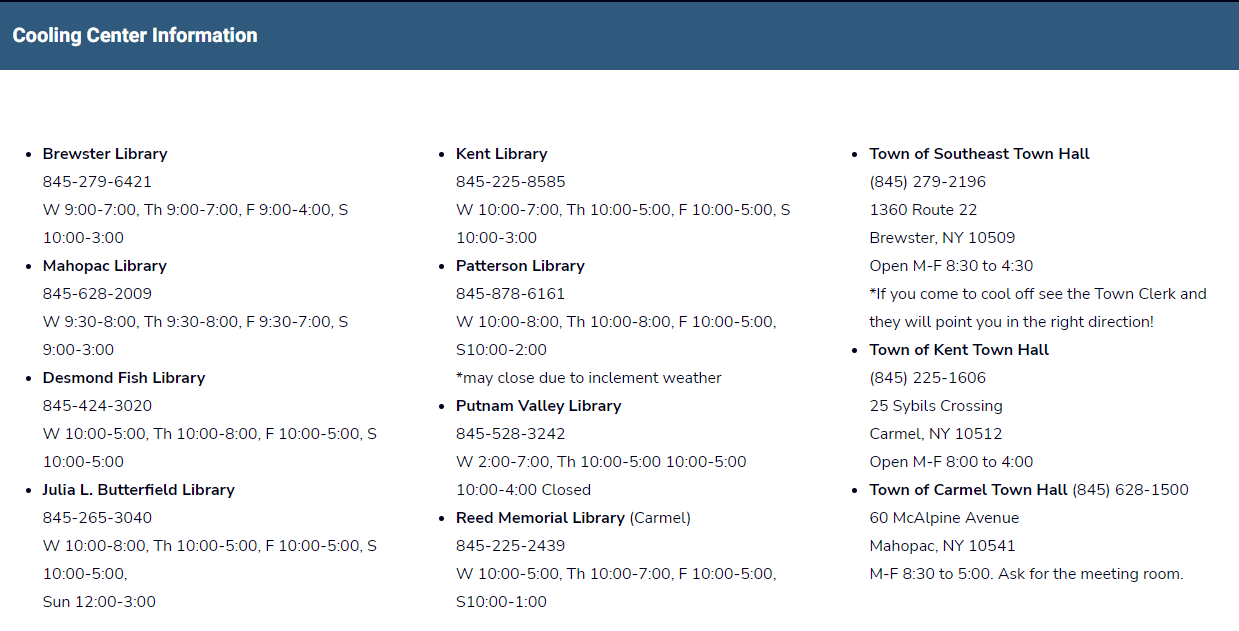
Farmer's Markets
Putnam County residents are no strangers to the value of locally grown produce and goods. That's why Cornell Cooperative Extension partnered with Putnam County to develop this Local Food Guide PDF of year round farmer's markets and food stand locations. The newly updated brochure was/is distributed at CCE events throughout the County as well as uploaded online to encourage residents to buy locally produced products. Additionally, the County partners with local nonprofit, Sustainable Putnam, who developed this webpage that acts as a educational resource as well as directory for local farmers markets, grocery stores, and food pantry locations throughout Putnam County. Lastly, Putnam County operates an educational farm facility, Tilly Foster Farm, that encourages regenerative/sustainable farming practices. The farm produces enough produce to supply Putnam County seniors at the Office for Senior Resources Senior centers, the on-site restaurant Tilly’s Table, the restaurant at the Putnam County Golf Course, and other local food pantries. A farm stand is also accessible at Tilly Foster from mid May to late November where visitors can purchase fresh, seasonal, pesticide-free produce produced on site.
Construction & Demolition Waste Policy
The below Construction & Demolition and Household Goods Waste Policy informational document gives an overview of C&D and household waste disposal options including a list of local service providers (haulers, recycling centers, thrift stores, Habitat for Humanity, Goodwill, etc.) and relevant excerpts from the Putnam County Charter. Additionally, the County Health Department maintains the Putnam Recycles website (https://putnamcountyny.com/health/recycle#HHWD) and hosts a bi-annual Household Hazardous Waste Drop-off day.
-
Ongoing Projects
Within the past decade, Putnam County has taken several steps in making the Putnam community more resilient against climate change. The following is a list of ongoing projects/events undertaken by the County.
Energy Efficiency Upgrades
In 2019 Ameresco, a renewable energy/energy efficiency engineering company, completed a comprehensive Investment Grade Audit (IGA) for Putnam County facilities. In the IGA Ameresco, together with the County, set forth a plan to identify, manage and conserve energy through a variety of Energy Conservation Measures (ECM). By implementing these ECMs with Ameresco, each facility owned and operated by the County will become a more safe, productive, and cost-effective environment for taxpayers and employees alike. Current ECMs for county facilities include web enabled programmable thermostat upgrades, roof repairs, solar PV array installations, window/door replacements, building skin replacements, AHU/HVAC upgrades, and more.
Native Plant Sales
Each Spring the County's Soil & Water Conservation District partners with the Cornell Cooperative Extension of Putnam County to host a native tree and shrub seedling sale. The seedling sale has a long-standing tradition of prioritizing and planting trees and shrubs that create habitats and protect water quality. Planting native trees reduces the amount of storm-water runoff which in turn reduces erosion and water pollution while stabilizing shorelines and reducing the effects of flooding. CCE orders its selection of plants from local nurseries that offer native trees, shrubs, and perennials that support bird and pollinator populations.
To learn more about the annual Putnam County Tree and Shrub Seedling Sale, visit https://cceputnamcounty.org/events/2023/02/14/putnam-countys-annual-tree-and-shrub-seedling-sale
To learn more about the significance of planting native species, visit https://www.audubon.org/content/why-native-plants-matter.
For a list of NY native plants for gardening and landscaping, visit https://extapps.dec.ny.gov/docs/lands_forests_pdf/factnatives.pdf.
Recycling and Compost
Curbside garbage and recycling programs are managed by each of the towns in Putnam County. For more information about your program, including pickup schedules, please contact your town.
To learn more about Putnam County recycling and composting, visit https://www.putnamcountyny.com/health/recycle/.
Household Hazardous Waste Drop-Off
Putnam County hosts two Household Hazardous Waste Drop Off Days (HHWD) each year, typically the first weekends of May and October at the Canopus Beach Parking Lot at Fahnestock State Park. For a list of accepted and non-accepted items, visit https://www.putnamcountyny.com/health/recycle/.
-
What Can You Do?
The changing climate represents both a great challenge and a great opportunity in our lifetime. By incorporating some or all of the following actions into our everyday routines, we have the power to lower our carbon footprints and mitigate the effects of climate change in our communities.
Energy Efficiency
- Solar Panel Installations: Are you a home or business owner ready to make the switch? Then this is your sign! Solar panels not only offer significantly reduced electric bills, but also tax rebates, the peace of mind from low to no GHG emissions, and reduced reliability on the grid during power outages. To learn more about if solar is right for you, visit www.energy.gov.
- Community Solar: Are you a renter, homeowner with limited sun exposure, or simply not interested in installing solar panels? Then Sustainable Putnam has the solution for you! By signing up for a free community solar program, you can save 10% on your electric bill by sourcing your energy from an upstate solar farm vs. a fossil fuel power plant. To learn more on how to sign up for free, visit https://sustainableputnam.org/community-solar/
- LED Bulbs: Making the switch LED light bulbs offers significant energy savings over incandescent, halogen, or CFL alternatives. LED bulbs not only last nearly 30x longer than incandescent bulbs, they also don't contain harmful mercury, and can save the average home roughly $200/year. To learn more about why you should switch, visit https://hyliteledlighting.com/2018/10/15/switch-to-led-lighting/.
- Lighting Controls: Everybody knows switching off lights and appliances when not in use can save energy and money. An inexpensive way to take the thought out of the action is to use light timers and/or smart appliances (Alexa, Google) and install dimmer switches and/or motion/photo sensors. Learn more about this easy fix at https://www.energy.gov/energysaver/lighting-controls.
- Energy Star Labeled Appliances: Choosing products with the ENERGY STAR label can help you save money and energy without sacrificing performance. In the market for a new dishwasher, refrigerator, washer, or dryer? Look for the blue ENERGY STAR label and learn more at https://www.energystar.gov.
- Tankless Water Heaters: Since tankless water heaters only operate when there is a hot water demand, they consume much less energy than conventional systems. Additionally, tankless water heaters take up significantly less space, produce fewer carbon emissions than their traditional counterparts, and last nearly 2x longer than a traditional unit (saving landfill space). To learn more about if the switch is right for you, visit www.forbes.com.
- Update Windows & Doors: Ensuring that your home or businesses has a proper seal is crucial to the heating and cooling of your space. Learn more about sealing and insulation at https://www.nyserda.ny.gov/Residents-and-Homeowners/Seal-and-Insulate-Your-Home.
Conserve Water
- Rain Barrels: Thankfully, there are no limitations to rainwater harvesting in New York. Collecting excess rain water can be great for lawn and garden maintenance in the hot summer months. To learn more about rain barrels, visit https://cceputnamcounty.org/environment/rain-barrel and be sure to water in the early morning or evening to prevent excess evaporation.
- Opt for Native Plants: Planting species native to the northeastern U.S. can not only help pollinators thrive but can also prevent the need for excessive watering. While you're at it, use mulch around shrubs and garden plants to save soil moisture too. To learn more about planting native species, visit the Educational and Resource Links Tab.
- Turn Off the Faucet: Leaving the faucet running while shaving, brushing your teeth, washing dishes, etc. can waste more than you think. The average person uses 10.9 gallons of water from the faucet a day.
- Install Waters Saving Fixtures: Toilets typically consume as much as 30% of an average home's indoor water use and showers account for around 20% which is why switching to low flow fixtures can help you save on your water bill without sacrificing pressure.
- Only Run Full Dishwashers & Washers: The average dishwasher uses 8-12 gallons whether or not it's a full load and the average washer uses 30-35 gallons per cycle. To learn more about water conservation, visit https://dec.ny.gov/environmental-protection/water/water-quantity/water-use-conservation.
Your Diet
- Grow Your Own/Buy Local: Whether you're a homesteader or a renter, there's a huge range of vegetable, herbs, and even fruits that can be grown in a relatively small area. And if you have no outside space whatsoever, research community gardens and allotments in your area, or even better, why not start one? Buying seasonal produce from local farms can also be a great way to cut your carbon footprint and connect with your community. To learn more about local food in Putnam County, visit https://cceputnamcounty.org/resources/putnam-county-local-food-guide.
- Vegetarian and Vegan Diets: When considering the sustainability of various diets, vegetarianism is the most sustainable because it excludes red meat, poultry and seafood but may still allow some animal products like eggs, dairy, and honey (personal preference). When animal products are eaten, there is energy transferred from plants to the animal then from the animal to humans. Meanwhile, consuming plants only involves an energy transfer from plants to humans. The number of energy transfers involved in a diet should be considered because there is an amount of energy lost with each transfer through the food chain. This diet also reduces both greenhouse gas emissions related to agricultural production and the amount of land used for agriculture. Although beneficial for your health and the environment, it's also important to consider the price and availability of fresh produce for these diets...and don't forget your protein, vitamins, and minerals! To learn more about the pros and cons of a vegetarian/vegan diet visit https://webber-nutrition.co.uk/vegan-diet-pros-and-cons/.
- Mediterranean Diet: You may have heard that the Mediterranean diet has ranked as one of the best diets over the past few years....it's true! This diet is not just a fad intended only for weight loss, it can also prevent cardiovascular diseases, like heart disease and high blood pressure, decrease the risk of dementia, and decreases your carbon footprint. The Mediterranean diet emphasizes eating less red meat, sugar and saturated fat and incorporating more fruits and vegetables, whole grains, beans, nuts, legumes, olive oil, herbs and spices into your daily diet. The diet is known to be a more sustainable alternative to the standard American diet due to its decreased consumption of meat-based products and increased reliance on plant-based agriculture. To learn more about the benefits of the Mediterranean diet, visit https://newsroom.ucla.edu/releases/paleo-keto-climatarian-diet-carbon-footprint and https://www.mayoclinic.org/healthy-lifestyle/nutrition-and-healthy-eating/in-depth/mediterranean-diet/art-20047801.
- Meatless Mondays: Not ready to fully commit to a plant based diet? Try switching out two or three meals a week with plant based meals or protein alternatives like tofu, tempeh, Impossible products, soy etc. With each vegetarian meal you consume, you will save 133 gallons of water, and each Meatless Monday, you will reduce your carbon footprint by eight pounds. For meatless meal ideas, try visiting https://www.eatingwell.com/gallery/7874759/30-minute-easy-meatless-dinner-recipes/
Clean Transportation
- Public Transit: Walking and biking are naturally the least carbon-intensive means of transport. But if your destination is too far to walk or bike, consider taking public transportation. One of the benefits of living in a metropolitan area is the increased availability of public transportation alternatives, especially in the northeastern U.S. Want to take a weekend trip to NYC but don't want to drive? MNR has you covered. Do you drive past your coworkers home on your way to work? Consider carpooling! Looking forward to a night out with friends? Uber and Lyft can safely take you all where you'd like to go. Obviously, the environmental benefits of public transportation vary based on the number of passengers per vehicle, the efficiency of the bus, train, or car and the type of fuel used, but the one thing for certain is that switching to riding public transportation is one of the most effective actions individuals can take to reduce their carbon footprint. To find what public transit routes are nearest to you in Putnam County visit https://putnamcountyny.com/transportation. To view what's available on a statewide scale, visit the Transit Trip Planner at https://511ny.org/#:Alerts.
- EVs and Hybrid Vehicles: Want to make the switch to a cleaner vehicle? There are a few things to consider first. Although energy costs for EVs are generally lower than for similar conventional vehicles, purchase prices and maintenance costs can be significantly higher. But initial costs can be offset by fuel cost savings like federal tax credits, state and utility incentives, and the federal Clean Vehicle Tax Credits. Visit the EV calculator at NYSERDA to find which vehicle may be right for you.
Reduce, Reuse, Recycle
- Reduce: Ever wonder why it's in that order? The first “R” can make the largest, most positive impact on the environment. If we reduce what we use, the energy, water, and resources that normally would go into making the product would never be expended. The thought process is to cut back on what we purchase and use only what is needed. So before you buy duplicates of the same item like the latest fast fashion trend or the newest color of reusable water bottles, think if you really need that product or if a similar item you have can serve the same purpose.
- Reuse: The second “R” is still better than recycling because you are re-purposing an item for another use without consuming significantly more resources. Ever since the 2020 plastic bag ban in New York, reports have concluded that nearly 300 plastic bags per person have been diverted from landfills and the environment. Choosing reusable bags and water bottles is a great way to get into the reuse habit.
- Recycle: Unfortunately, the amount plastic that actually gets recycled in the United States is only about 5-9% of what gets tossed in the bin. Plastics are nearly impossible to recycle because of the many different types that cannot be recycled together because thousands of different chemical additives make plastics soft, fire resistant or give them other properties. Additionally, this is the costlier option of the three “R’s” and is tricky in regards to educating people on how to recycle materials. So what are the most recyclable materials? Studies show that steel, aluminum cans, glass, and cardboard are among the easiest truly recyclable materials, meaning it takes less energy to convert them to another product than to produce another product entirely.
- Composting & vermicomposting: Composting is a great addition to the three "R"s. Composting is a controlled, aerobic (oxygen-required) process that converts organic materials into a nutrient-rich, biologically-stable soil amendment or mulch through natural decomposition. In short, it's nature's way of recycling and one of the most impactful ways to reduce our personal methane emissions. Diverting organic materials like fruit and vegetable scraps, grass clippings, coffee grounds, tea bags, egg shells, etc. can not only save you money on trash bags each month, but can also leave you with an organic soil additive that can leave you with beautiful produce and flowers. Don't have enough space to compost or don't want to maintain a pile? Try vermicomposting, or worm composting, a space saving, inexpensive method that only requires a container or bin, bedding material, worms, and food scraps. Other alternatives include community composting or a subscription based composting service like Mill. To learn more about how to start composting or vermicomposting, visit https://cceputnamcounty.org/gardening/compost-resources
Buy Local
- Farmers Markets: Again, buying local, in season produce and other edible goods is a great way to build healthy habits, support local economies, and connect with your community. To view a list of local food in Putnam County, view CCE's Local Food Guide at https://cceputnamcounty.org/resources/putnam-county-local-food-guide.
- Visit Local Thrift Shops: Thrifting or shopping secondhand is a great way to reduce your environmental footprint while finding some really cool and unique items that you wouldn’t be able to get elsewhere. When you thrift something, you are not directly supporting the demand for new things to be made, and this has a positive impact since resources and energy were already used to create that item. Specific to clothing and textiles, less fabric is wasted, and the water footprint of an item becomes less since the life of the item is extended. Additionally, buying secondhand can reduce the amount of items sent to a landfill and prevent contamination of our water, soil, and air positively affecting the quality of many resources we need to survive. After all...one man's trash is another man's treasure! Check out the list below for secondhand/thrift/consignment stores within and near Putnam County:
- Blue Door Thrift Shop
1062 Rt. 311, Patterson, NY
Website - Careers Thrift Shop
208 NY-52, Carmel, NY 10512
(845) 225-8007 - DamnAged Vintage (Consignment)109 Main St, Cold Spring, NY 10516(845) 809-5600
Website - Goodwill NYNJ Store & Donation Center
80 Rt. 6, Baldwin Pace, NY
(914) 621-0781
Website - Housatonic Habitat for Humanity Re-Store (Danbury, CT)
51 Austin St, Danbury, CT 06810
(203) 744-1340
Website - Habitat for Humanity Restore (Dutchess Co)
1822 US-9, Wappingers Falls, NY 12590
(845) 297-7610
Website - Habitat for Humanity Newburgh Restore (Orange Co)
38 S. Plank Road, Newburgh, NY 12550
(845) 565-1789
Website - Secondaries Boutique
1875 US-6, Carmel, NY
(845) 520-6000
Website - That Nothing Be Lost Thrift
16 Franciscan Way, Garrison, NY 10524
(845) 424-3635
Website - The Vintage Shop Carmel (Consignment)222 NY-52 Suite 2, Carmel Hamlet, NY 10512
845-306-7332 / 917-545-3811
Website
- Blue Door Thrift Shop
Participate!
- Climate and Your Career: Incorporating climate into your career (i.e. as a scientist, policy maker, teacher, program coordinator, local/state/federal employee, etc.) is a great way to make a difference in your community by educating others and encouraging future generations to do the same. Visit sites like https://environmentalcareer.com/ or https://greenjobs.net/ to start your career search today.
- Vote!: Vote for public officials who support ambitious climate change action and increasing sustainability, like increasing nature-based solutions, protecting nature and scaling up renewable energy.
- Volunteer and/or Donate: Donate to environmental nonprofits like The Nature Conservancy, WWF, Environmental Defense Fund, etc. Visit greatnonprofits.org to view their list of the most popular environmental nonprofits and charities in New York, or eartheasy.com to view a list of 10 high impact environmental charities with integrity.
- Encourage children to play outdoors and get a sense of appreciation for the natural world.
Other Steps You Can Take
-
Our Partners
Local climate action starts with dedicated residents, businesses, communities, municipalities, and organizations partnering to develop and foster sustainable places to live, work, and play. Below are some of our partners that play a direct role in our climate smart initiatives and regional planning activities.
Sustainable Putnam
Founded in 2020, Sustainable Putnam is a local nonprofit organization with a mission to develop sustainable communities across Putnam County, NY. The organization frequently organizes and publicizes local events such as community solar sign up, repair cafes, monthly e-newsletters, community composting, and more. Recently, the County partnered with Sustainable Putnam to advise on our Climate Smart actions and objectives.
To learn more about upcoming events, visit their website, follow them on social media (Facebook or Instagram) or direct your inquiries to Joe Montuori, Executive Director, at
This email address is being protected from spambots. You need JavaScript enabled to view it. .Cornell Cooperative Extension, Putnam County
Since 1944, Cornell Cooperative Extension of Putnam County (CCEPC) continues to use research based knowledge through their partnership with Cornell University to assist the residents of Putnam County. Believing that lifelong education is the key to behavioral change, Cornell Cooperative Extension has become Putnam’s leading provider of educational programs and resources that strengthen families and communities and enhance Putnam’s environment. Their educational programs are designed to address current community issues in the environment and encourage community, youth and family development. Most notably, CCEPC has partnered with the County over the past 15 years or so to host the annual Native Seedling Sale, develop pollinator pathways, and organize the annual County 4-H Fair at Veteran's Memorial Park.
To learn more about upcoming events, visit their website, follow them on social media (Facebook, X, Pinterest, YouTube, or Instagram), or direct your inquiries to Stefanie Hubert, Executive Director, at
This email address is being protected from spambots. You need JavaScript enabled to view it. .New York Metropolitan Transportation Council (NYMTC)
As the Metropolitan Planning Organization (MPO) for New York City, Long Island and the lower Hudson Valley, NYMTC provides a collaborative planning forum to address transportation-related issues, develop regional plans and make decisions on the use of federal transportation funds for its planning area. NYMTC’s planning area includes 2,440 square miles and a 2020 population of 13.17 million, approximately 65% of New York State’s population and 4 percent of the population of the nation. To respond to local needs, NYMTC is comprised of three TCCs which recommend sub-regional transportation priorities and provide opportunities for more local participation. Putnam County works directly with NYMTC and the Mid-Hudson South Transportation Coordinating Committee (MHSTCC) to optimize local transportation in the forms of public transit, bikeways, local roads, and transitioning to a low-no emission transit landscape.
-
Educational and Resource Links
Educational Links
- To learn more deforestation, visit https://www.wwf.org.uk/learn/effects-of/deforestation
- To learn more about global climate change, visit https://climate.nasa.gov/evidence/
- To learn more about climate change related health issues, visit https://www.apha.org/news-and-media/multimedia/infographics/how-climate-change-affects-your-health
- To learn more about how climate change is impacting the Hudson Valley region, visithttps://theotherhudsonvalley.com/2018/11/29/climate-change-hudson-valley/
- To learn more about climate refugees in the Hudson Valley, visit https://www.pattern-for-progress.org/climate-refugees-are-moving-to-the-hudson-valley-should-we-expect-more/.
- To learn more about sea level rise in the Hudson Valley, visit https://scenichudson.maps.arcgis.com/apps/MapJournal/index.html?appid=3a3d0dc3884c4637ad0a51f4aa912189
- To learn more about the affects of climate change on NY plants and animals, visit https://news.climate.columbia.edu/2017/01/06/how-climate-change-is-affecting-new-yorks-plants-and-animals/.
- To learn more about Putnam County recycling and composting, visit https://www.putnamcountyny.com/health/recycle/.
- To learn more about solar panels, click here: https://www.livescience.com/41995-how-do-solar-panels-work.html and https://www.reliablecounter.com/blog/the-best-flexible-solar-panels-in-2019-the-ultimate-guide/
- To learn more about plastic waste and its connection to climate change, visit https://www.wwf.org.au/news/blogs/plastic-waste-and-climate-change-whats-the-connection#gs.bfotrq
- For more information on reducing waste, visit https://www.epa.gov/recycle/reducing-waste-what-you-can-do
- To learn how to calculate your carbon footprint, visit https://www3.epa.gov/carbon-footprint-calculator/
- To learn more about energy efficient lighting and appliances, visit https://www.nyserda.ny.gov/Residents-and-Homeowners/Use-Efficient-Appliances-and-Lighting
- To learn more about decreasing your carbon footprint, visit https://www.nyserda.ny.gov/Residents-and-Homeowners/Reduce-Your-Footprint
Resource Links
- To learn more about the annual Putnam County Tree and Shrub Seedling Sale, visit https://cceputnamcounty.org/events/2023/04/21/putnam-county-tree-shrub-seedling-sale-pick-up-pre-orders.
- Putnam County Agricultural and Farmland Protection Plan & Farmers Market Brochure Please visit Keep Putnam Farming at https://www.putnamcountyny.com/keepputnamfarming/
-
Natural Resource Inventories (NRIs)
A natural resources inventory (NRI) compiles information on important, naturally occurring features within a given locality (e.g., municipality, watershed, or region), such as geology, soils, streams, wetlands, forests, and wildlife. Cultural resources such as scenic and recreational assets are often included, as well. NRIs are comprised of maps, data, and a report that describes the resources and the project. The NRI may be integrated into a comprehensive, open space, or watershed plan, or be a stand-alone reference. The inventories themselves are completely voluntary and essentially serve two different purposes (1) to provide the building blocks for comprehensive land-use and conservation planning, and (2) to allow natural resource information to be included in local planning and zoning. (Source: NYSDEC)
Carmel: Carmel Comprehensive Plan (2022 -2035) Natural Resources Section
Kent: 2023 Kent NRI
Patterson: 2000 Patterson Comprehensive Plan (see pgs. 69-90)
Philipstown: 2020 Philipstown NRI
Putnam Valley: 2018 Putnam Valley NRI
Southeast: 2014 Southeast Comprehensive Plan (see section 4-1 - 4-10)
EV Charging Station Locator
Contact Us
Mission Statement
The Planning Department is open from 9am to 5pm Monday through Friday with the exception of Summer Hours from mid-June through mid-September (8am - 4pm).
The Putnam County Climate Smart initiative was undertaken by the Department of Planning, Development, and Public Transportation in order to take action to reduce greenhouse gas emissions and adapt to a changing climate.
Contact Putnam County
Climate Smart
Climate Smart
-
Email | Send us a message
-
Address | 841 Fair Street
Carmel, NY 10512
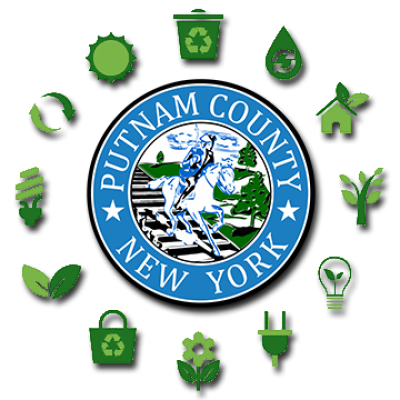
-
Barbara Barosa, AICP
Commissioner -
Ilona Campo
Climate Smart Coordinator

Putnam County Office Building
40 Gleneida Avenue
Carmel, New York 10512
© 2005 - Putnam County Online
Powered by ![]() Flight
Flight
